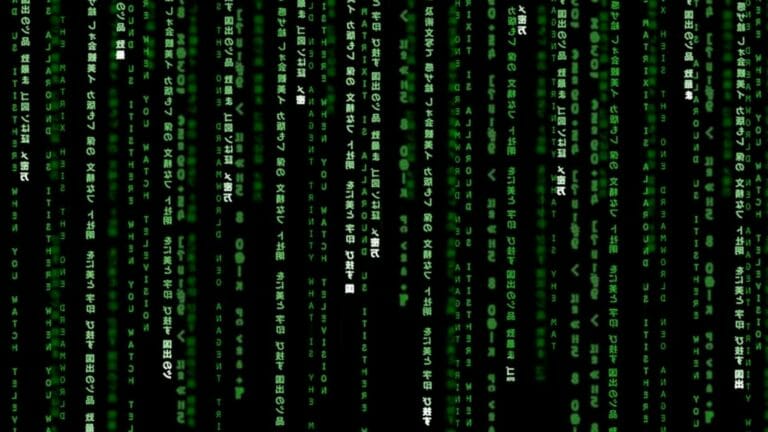By Staff · November 16, 2017

By: Matt van Onselen
It’s one of the main reasons we watch movies: the moment our lead character or characters leave their “ordinary world” and enter a new world, one full of the unknown. This world can be scary, funny, intimidating or invigorating. There are new characters to meet and new obstacles to overcome. And it usually all kicks off around page 30.
Prior to that moment, we’ve seen the lead character stuck in a familiar, predictable world. Everything is known, everything is safe. Usually, the hero feels unsatisfied in these circumstances. Somehow, they’re brought out of it, whether by choice, by force or by luck. It’s important as writers that we throw the character into new circumstances that are entirely distinct from the previous ones. This can be done is many ways. Let’s take a look at some of these transitions.
 The Matrix
The MatrixThomas Anderson starts the movie as a sheltered programmer whose only outlet is through his online presence as alter ego Neo. He’s looking for more, a way to make a difference. He pops the red pill and leaves the comfort of a world containing dim lighting and 1990s computers for…
…the “real” Earth. As soon as Thomas wakes up, he struggles to breathe. If ever there was an example of a character struggling to come to terms with a new world, this is it. He also has a bunch of cables connected to his body. This is the point of no return. Once acclimatized, he learns first-hand the truth about Earth and the machines. He also starts identifying as Neo, and grows familiar with the workings of the Matrix. He’s a long way away from his apartment and his dial-up connection.
 Jurassic Park
Jurassic ParkAlan Grant and Ellie Sattler are scientists who focus on long-lost life forms fossilized in stone. They study the past, dusting rocks off and using scanning technology to uncover 65 million-year-old truths. They are constantly seeking funding, and they live deep in their imaginations – how else can they get close to extinct dinosaurs and plants? Well, one way is to take a helicopter ride to…
…an island full of dinosaurs. In this new world, there are real-life, living, breathing dinosaurs that can be studied and analyzed. The scientists explode with questions, left, right and center. And they get answers about how the creatures move, how they feed, how they run together. These experiences are in stark contrast to their old lives, which focused on the hypothetical. They’ll never be the same after making that journey.
 The Fly
The FlyNot every “new world” is reached through a journey, as we shall see. In keeping with the scientist motif, let’s look at Seth Brundle, who has been working on a teleportation device in isolation for several years. But he enters a realm of new experiences when he jumps in a contaminated teleportation machine and becomes…
…a human-fly genetic hybrid. Slowly but surely, Brundle starts enjoying new powers. He can have endless sex. He’s stronger, more agile. He can even climb walls. And gradually he transforms into a new creature he calls Brundle Fly. All of this takes place within the confines of his laboratory, proving that you don’t need a location change for your character to embark on a new journey. In The Fly, it’s almost entirely confined to Brundle and his body.
 Groundhog Day
Groundhog DayMore surreal still, Groundhog Day shows that you don’t even need a linear progression to create a new world. Weatherman Phil Connors has little passion for his work, and particularly despises his newest assignment covering Groundhog Day in a small town. He does a half-assed job and wants to get back to his creature comforts at home when he wakes up…
…in a Groundhog Day time loop. So how can this be a new world if he’s literally seen it all before? The difference lies in his ability to recognize patterns and slowly take advantage of them. Phil has to negotiate (and renegotiate and renegotiate) this perpetual time loop, showing how even repetition can offer a whole new world of challenges for a character. He starts his journey in the new Groundhog Day world by fulfilling his immediate pleasures, but he eventually learns that personal growth and selflessness make for a better life.
 The Truman Show
The Truman Show And finally, let’s explore how a new world can be revealed through mere suspicion. Truman Burbank lives a nauseating life of happy greetings and mind-numbingly boring work, which all takes place inside a giant studio (unbeknownst to him). He’s stifled and frustrated because forces seemingly conspire to stop him from making changes. But things take a new direction when he jumps in his car, puts on the radio and realizes…
…people are taking note of every move he makes. Every street he’s on, every turn, every time he brakes. And so, even though Truman remains in the same studio, his suspicion opens up a new world. This includes seeing how traffic magically appears and disappears around him, how elevators are non-functional when he’s not expected to use them, and how his wife speaks about hot cocoa products when they have nothing to do with the immediate situation. His stale, traditional life has been replaced with intrigue and mistrust.
For the latest from The Script Lab, check us out on Twitter, Facebook, and Instagram.